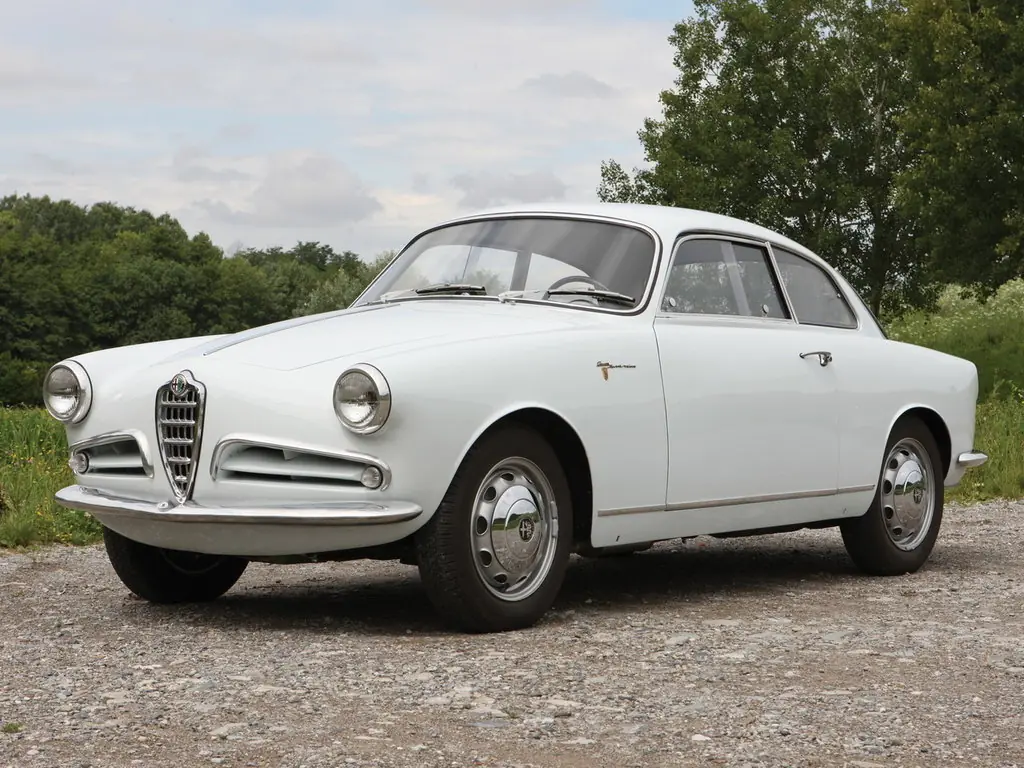The Alfa Romeo Giulietta marks a pivotal moment in automotive history when Italian engineering excellence became accessible to the masses. This compact masterpiece didn’t just democratize performance – it redefined what drivers could expect from a production car in the 1950s.
Back when most family cars were basic transportation appliances, the Giulietta arrived with racing-derived technology and hand-crafted elegance. It challenged the notion that high-performance Italian machines were exclusively for the wealthy elite.
Engineering That Changed the Game
The heart of the Giulietta was its groundbreaking 1.3-liter engine. While competitors still used cast iron blocks and pushrod valvetrains, Alfa Romeo’s engineers crafted an all-aluminum powerplant with twin overhead camshafts. This compact wonder produced 65 horsepower in standard trim – remarkable output for its displacement in the mid-1950s.
The engine’s construction wasn’t just about power – it represented a fundamental shift in production car engineering. Lightweight materials and advanced valve actuation would become industry standards decades later.
“I’ll never forget the first time I drove a restored ’56 Giulietta Sprint. The engine was so eager to rev, so smooth and sophisticated. Nothing else from that era comes close.” – James Mitchell, Classic Car Restorer
The motor’s willingness to spin freely complemented the car’s lightweight chassis perfectly. Each component worked in harmony, delivering a driving experience that felt decades ahead of its time. Even today, the mechanical symphony of a well-maintained Giulietta engine stirs the soul of automotive enthusiasts.
Design That Transcends Time
While other manufacturers focused on American-inspired excess, the Giulietta’s design spoke a different language. Its compact proportions housed perfect balance and proportion. The signature Alfa Romeo grille led into subtle curves and crisp lines that would influence car design for decades.
Here’s what made the Giulietta’s design revolutionary for its time:
- hand-shaped aluminum body panels created perfect contours;
- aerodynamic principles guided the shape long before wind tunnels became common;
- multiple body styles shared consistent design DNA;
- minimal chrome accents bucked the trends of the era;
- perfect proportions emphasized sporting intent.
These design elements weren’t just for show – they contributed to the car’s impressive performance and handling characteristics. Form truly followed function, creating an enduring aesthetic that still influences automotive design.
Behind the Wheel
The Giulietta’s chassis dynamics wrote the blueprint for future sports sedans. Its rear-wheel-drive platform, aided by independent front suspension and a well-located rear axle, delivered handling precision that seemed impossible for a family car of its era.
“After restoring dozens of classic cars, the Giulietta stands out. Its handling balance and steering feel are remarkable – it drives like a much newer machine.” – Thomas Reynolds, Vintage Racing Mechanic
The driving position was perfect – upright enough for visibility but sporty enough for engagement. Controls fell naturally to hand, with the trademark Alfa Romeo dashboard layout providing clear information without unnecessary complication.
The car responded to inputs with an immediacy that built driver confidence. Whether navigating tight city streets or sweeping through mountain passes, the Giulietta remained composed and capable.
Competition Heritage
Racing success quickly followed the Giulietta’s introduction. The combination of light weight, sophisticated engineering, and excellent handling made it a formidable competitor in both circuit racing and rallying.
Key racing achievements include:
- multiple class wins in the Mille Miglia;
- successful campaigns in European touring car championships;
- numerous rally victories across Europe;
- countless amateur racing successes worldwide;
- establishment of Alfa Romeo’s racing reputation in new markets.
These competition successes proved the Giulietta’s engineering excellence and helped establish Alfa Romeo’s global reputation for building driver’s cars.
The Lasting Impact
Few cars have shaped automotive culture quite like the Giulietta. It proved that a family car could offer genuine sporting credentials without compromising daily usability. This philosophy would influence countless vehicles that followed.
| Pros | Cons |
|---|---|
| Revolutionary aluminum engine with DOHC | Limited parts availability today |
| Multiple elegant body styles | Rust-prone body panels |
| Outstanding handling dynamics | Requires specialized maintenance |
| Racing pedigree | Higher running costs than period competitors |
| Strong collector value | Complex mechanical systems |
| Historical significance | Restoration challenges |
| Influential design | Limited interior space |
The Giulietta remains more than just a classic car – it represents a turning point when sophisticated engineering and design became available to enthusiast drivers. Its influence extends far beyond its production numbers, creating a template for the modern sports sedan that remains relevant today.

